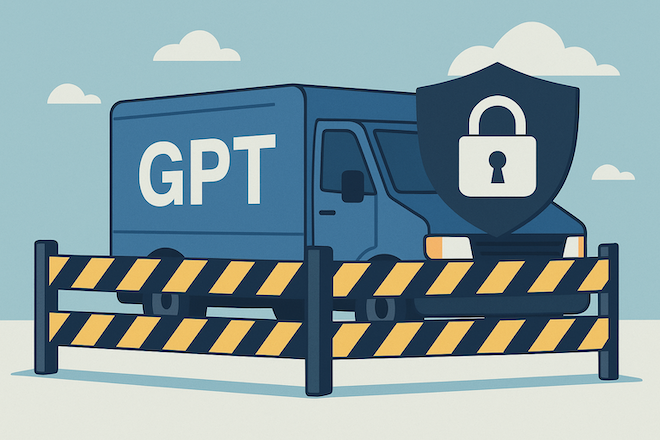Enterprises are no longer asking if they should use GenAI – they are demanding to know how to use it safely. The rapid deployment of generative models across finance, healthcare, legal, and public sectors triggered a wave of risk assessments, policy rewrites, and architectural overhauls aimed at one goal: enterprise-grade governance.
Leading this transformation were major cloud platforms. Google launched AIAA (AI Application Architecture), a governance suite within Vertex AI that offered:
- Prompt sanitisation and logging
- Role-based access controls (RBAC) for prompt execution
- Data classification tagging and usage restrictions
Microsoft’s Azure AI Content Filtering stack, on the other hand, provided pre-built classifiers for toxic language, PII detection, hallucination probability scoring, and prompt injection prevention. Companies could now apply filtering and sanitisation layers before and after model interactions.
Meanwhile, startups stepped into the compliance tooling vacuum. Tools like Calypso AI, PromptArmor, and Lakera offered:
- AI firewall services for real-time policy enforcement
- DLP scanning for outbound LLM traffic
- Prompt risk scoring based on sensitivity and intent
These tools integrated with enterprise logging systems like Splunk and Datadog, allowing security teams to trace AI decisions back to specific prompts, users, and datasets. This traceability proved essential for sectors under strict regulatory scrutiny.
Financial institutions, in particular, led the way. Several major banks began rolling out LLM-based client support tools, but only after introducing:
- Strict isolation of customer queries from model training
- Model behaviour attestations for regulators
- Audit logs with hashed prompt fingerprints
In healthcare, HIPAA-compliant wrappers around OpenAI and Google APIs became the norm. Vendors built middleware layers to mask PHI, log sensitive token usage, and route requests through regional endpoints with jurisdictional awareness.
A new role began to emerge: the AI Risk Officer. These professionals worked cross-functionally between legal, security, data governance, and engineering to ensure:
- LLM usage aligned with internal policy and external regulations
- Fine-tuning or RAG models didn’t accidentally include sensitive datasets
- Vendors were reviewed under third-party risk frameworks
To support these governance goals, a wave of frameworks and standards were introduced:
- NIST AI RMF (Risk Management Framework)
- ISO/IEC 42001 for AI Management Systems
- EU AI Act draft implementation checklists
Organisations began applying model cards and system cards—detailed documentation describing intended model use, risk factors, limitations, and data sources—to every internal GenAI deployment.
But implementing enterprise guardrails wasn’t just about tooling—it required a cultural shift. Teams had to:
- Create LLM usage policies akin to acceptable use policies for SaaS apps
- Introduce AI onboarding and training programmes for employees using models in decision-making workflows
- Conduct red teaming exercises to probe models for compliance and bias issues
One notable trend was the rise of shadow AI—unauthorised use of GenAI by employees. In response, IT departments began deploying monitoring agents to detect tools like ChatGPT, Claude, and Perplexity being used without approval.
Despite these challenges, the rewards were substantial. Enterprises that implemented effective guardrails unlocked massive efficiency gains from:
- Automated report writing
- Drafting legal templates and documentation
- Summarising customer sentiment across channels
- Accelerating R&D literature reviews
For GenAI to scale safely, trust had to be earned. The model’s answer was no longer good enough—executives wanted to know why the model said what it said, what data it was based on, and who would be accountable for it.
September 2024 marked a turning point: the wild west of generative AI was over. In its place emerged a regulated, governed, and enterprise-aligned ecosystem that prioritised compliance, transparency, and control over novelty. And with it, GenAI moved one step closer to becoming a default part of the corporate technology stack.

No responses yet